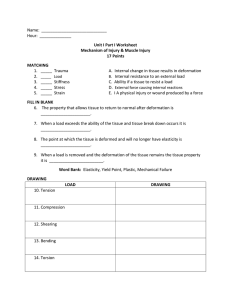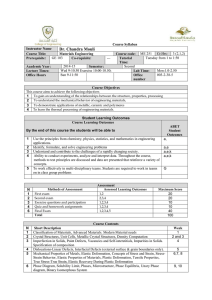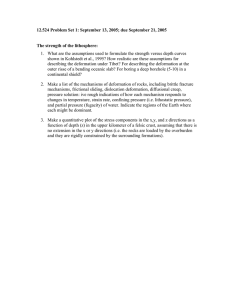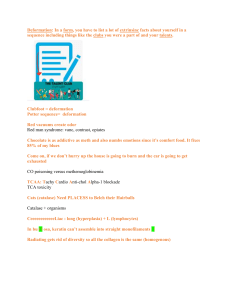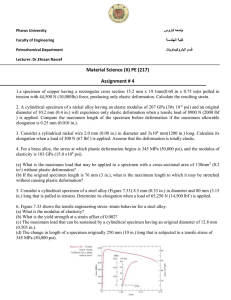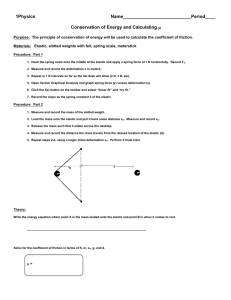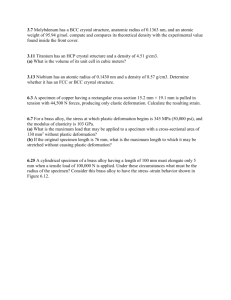Elasticity
advertisement
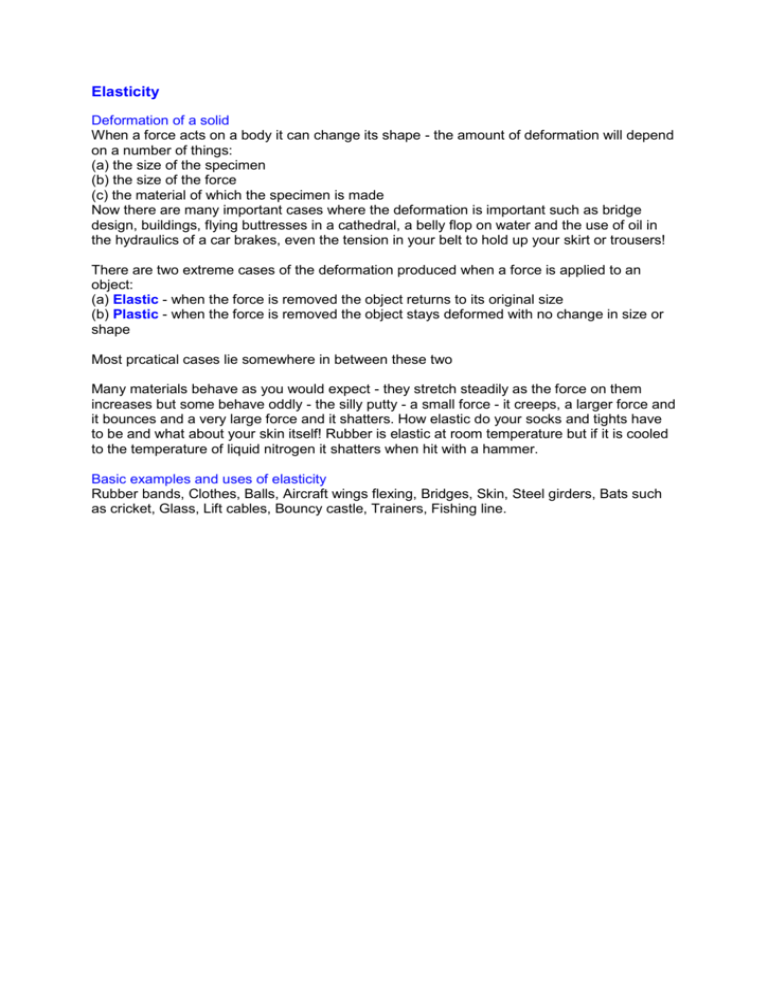
Elasticity Deformation of a solid When a force acts on a body it can change its shape - the amount of deformation will depend on a number of things: (a) the size of the specimen (b) the size of the force (c) the material of which the specimen is made Now there are many important cases where the deformation is important such as bridge design, buildings, flying buttresses in a cathedral, a belly flop on water and the use of oil in the hydraulics of a car brakes, even the tension in your belt to hold up your skirt or trousers! There are two extreme cases of the deformation produced when a force is applied to an object: (a) Elastic - when the force is removed the object returns to its original size (b) Plastic - when the force is removed the object stays deformed with no change in size or shape Most prcatical cases lie somewhere in between these two Many materials behave as you would expect - they stretch steadily as the force on them increases but some behave oddly - the silly putty - a small force - it creeps, a larger force and it bounces and a very large force and it shatters. How elastic do your socks and tights have to be and what about your skin itself! Rubber is elastic at room temperature but if it is cooled to the temperature of liquid nitrogen it shatters when hit with a hammer. Basic examples and uses of elasticity Rubber bands, Clothes, Balls, Aircraft wings flexing, Bridges, Skin, Steel girders, Bats such as cricket, Glass, Lift cables, Bouncy castle, Trainers, Fishing line.

